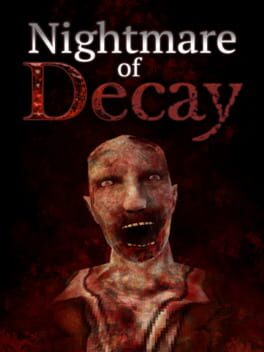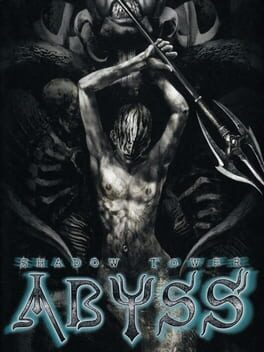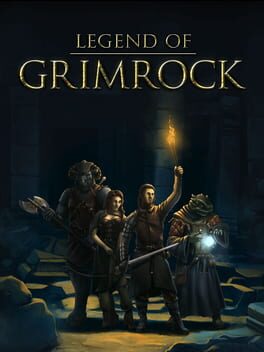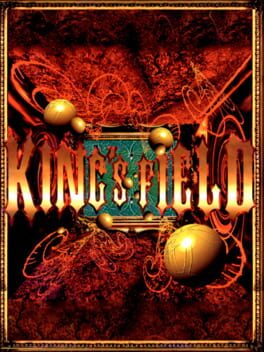W4AM
2 reviews liked by W4AM
Nightmare of Decay
2022
The modern indie scene finally progressed past mainly reinventing the 16 bit platformers of yesteryear, and we've now been seeing more new takes on early 3D juggernauts. From the boomer shooter revival, to the whimsical collectathons collecting your cash through Kickstarter, the 90s kids have grown up and are creating ways to let you re live your childhood. With that comes games that would have been played non stop on warm summer nights, and titles that would have made you cry if you got them on Christmas, figuring out frantically if you could find a way to return it.
Nightmares of Decay sadly falls more in the latter. A first person horror title styled after the first Resident Evil, your tasked with combing a similarly spooky mansion filled with monsters and uncovering the mystery held within. The atmosphere is fairly good and the game does have some decent sequences that go beyond what inspired it. The opening scene before arriving at the mansion all be it brief, started things off on the right foot. Eventually this fades however, with the tension and atmosphere not doing its job in building, instead simmering out far too soon. If crafting more intriguing areas and scares to go along with them was too much, adding the same kind of cheese found within the first Resident Evil would have gone a long way. At least something narratively that's of substance, which the scant uninteresting diary entries don't count as. There's no drive beyond the core gameplay, which as you'll see leads to the whole experience falling apart.
The gameplay is serviceable at best, borderline bad in my eyes. You hunt for the limited ammo the game throws at you, relying on your knife for a fair amount of time. Solving basic as hell puzzles to progress, backtracking almost constantly through copy paste rooms. I'm not against games that try to make the player work for a kill, needing to scrape by on few resources. It's just not something that's super easy to get right, with even some survival horror juggernauts giving you too little or too many resources. When the game has flexibility in it's systems however, the player can be given a level of agency to overcome obstacles in interesting ways and negate any kind of imbalance the game throws at you. Nightmares of Decay not only doesn't feel balanced with bullet sponge enemies and too few resources, its so linear there's very little you can actually do. I could have missed some hidden stash of ammo or something, but with how samey everything looks I wouldn't have known it was a new room anyways and probably would have just thought I missed something. In a game that's small to begin with, funneling you in a pretty clear direction, and looking like everything is copy pasted, being required to backtrack is going to obviously be tiring. The kind of progression that works in better designed games can't be the main course in something that's falling apart at every seem. It's like the lack of story, something that wouldn't matter if the game was actually better.
Relying on your knife to slowly chip away at enemies as you waddle back and fourth to avoid their attacks in your best bet. The controls make this more difficult than it really needs to be, showing how Nightmares of Decay really does know how to recreate the feel of old school survival horror. Only the bad parts though.
Eventually you face enemies that aren't just your bullet absorbing zombies but actually engaging. The problem is your still strapped for resources and can't move for shit. The zombie dogs are fairly cool if frustrating, leading to be leaving and entering the area multiple times picking them off however I can. If you weren't so slow, at least you could competently run but alas. Villagers that shoot at you showcase the final issue I wasn't aware of, how bad the shooting is. Despite you not being able to hit the broad side of a barn without standing perfectly still, most combat encounters up to that point didn't require you to do more than hit slow moving zombies or dogs that run straight towards you. Now you have to contend with fricking bullet ballistics ala Counter Strike. What the actual hell?? Lol, at that point I called it quits. After looking up gameplay there's a few scenes towards the end that show promise, giving you some kind of explanation as to what's going on but its far too late in my eyes.
If you can get enjoyment out of the admittedly decent environment design and absolutely love survival horror, you can do worse for the few bucks and hours this one will take from you. I just can't see why you would really want to, when the genre had so many better incarnations from back then and even now. Maybe they don't follow The first RE to a T as much as this one, I don't really know. But new indie horror games are a dime a dozen and you really can do so much better even for that cheap.
Nightmares of Decay sadly falls more in the latter. A first person horror title styled after the first Resident Evil, your tasked with combing a similarly spooky mansion filled with monsters and uncovering the mystery held within. The atmosphere is fairly good and the game does have some decent sequences that go beyond what inspired it. The opening scene before arriving at the mansion all be it brief, started things off on the right foot. Eventually this fades however, with the tension and atmosphere not doing its job in building, instead simmering out far too soon. If crafting more intriguing areas and scares to go along with them was too much, adding the same kind of cheese found within the first Resident Evil would have gone a long way. At least something narratively that's of substance, which the scant uninteresting diary entries don't count as. There's no drive beyond the core gameplay, which as you'll see leads to the whole experience falling apart.
The gameplay is serviceable at best, borderline bad in my eyes. You hunt for the limited ammo the game throws at you, relying on your knife for a fair amount of time. Solving basic as hell puzzles to progress, backtracking almost constantly through copy paste rooms. I'm not against games that try to make the player work for a kill, needing to scrape by on few resources. It's just not something that's super easy to get right, with even some survival horror juggernauts giving you too little or too many resources. When the game has flexibility in it's systems however, the player can be given a level of agency to overcome obstacles in interesting ways and negate any kind of imbalance the game throws at you. Nightmares of Decay not only doesn't feel balanced with bullet sponge enemies and too few resources, its so linear there's very little you can actually do. I could have missed some hidden stash of ammo or something, but with how samey everything looks I wouldn't have known it was a new room anyways and probably would have just thought I missed something. In a game that's small to begin with, funneling you in a pretty clear direction, and looking like everything is copy pasted, being required to backtrack is going to obviously be tiring. The kind of progression that works in better designed games can't be the main course in something that's falling apart at every seem. It's like the lack of story, something that wouldn't matter if the game was actually better.
Relying on your knife to slowly chip away at enemies as you waddle back and fourth to avoid their attacks in your best bet. The controls make this more difficult than it really needs to be, showing how Nightmares of Decay really does know how to recreate the feel of old school survival horror. Only the bad parts though.
Eventually you face enemies that aren't just your bullet absorbing zombies but actually engaging. The problem is your still strapped for resources and can't move for shit. The zombie dogs are fairly cool if frustrating, leading to be leaving and entering the area multiple times picking them off however I can. If you weren't so slow, at least you could competently run but alas. Villagers that shoot at you showcase the final issue I wasn't aware of, how bad the shooting is. Despite you not being able to hit the broad side of a barn without standing perfectly still, most combat encounters up to that point didn't require you to do more than hit slow moving zombies or dogs that run straight towards you. Now you have to contend with fricking bullet ballistics ala Counter Strike. What the actual hell?? Lol, at that point I called it quits. After looking up gameplay there's a few scenes towards the end that show promise, giving you some kind of explanation as to what's going on but its far too late in my eyes.
If you can get enjoyment out of the admittedly decent environment design and absolutely love survival horror, you can do worse for the few bucks and hours this one will take from you. I just can't see why you would really want to, when the genre had so many better incarnations from back then and even now. Maybe they don't follow The first RE to a T as much as this one, I don't really know. But new indie horror games are a dime a dozen and you really can do so much better even for that cheap.
The Legend of Zelda
1986
What surprised me the most about the first Zelda is how playable and genuinely good it still is today. The common criticisms about it being too confusing or cryptic are – for the most part – just prejudices. They most likely stem from an unwillingness to engage with the game on its own terms. The only big obstacle comes at the very beginning: You are likely to see the first couple of game over screens before feeling like you’ve accomplished much of anything. I was ready to give up at some point this early on, but mostly due to everything I read about how impossibly difficult and frustrating the whole game was supposed to be. It is not. And once I got over the initial hurdle, I was completely fascinated by the experience all the way through the end.
Yes, you are given no clear direction and just a vague idea of what you must do. Yes, you are going to spend the first hour or so wandering around, getting lost and not making much progress. And yes, there are a lot of secrets in the game that most players will never stumble upon. Yet all this really means is that the game does not explicitly teach you how to engage with it. Instead, you have to figure out the rules of engagement by yourself. This might seem like an unreasonable demand for a player today, but it was and still is appropriate for a game from 1986. First of all, the rules themselves aren’t very complex. There are only two action buttons and items usually don’t serve many different, context-sensitive functions. The game is probably even more accessible to a new player now than it was when it first came out. Today we are already familiar with all the gameplay tropes that The Legend of Zelda established back then in the first place. We now know how progression is structured in a game like this, we know that walls could be bombable, heart containers are better than potions etc. For a modern player, the process of understanding this game is more about figuring out what you can’t do than what you can.
Second, the world might seem intimidatingly big with almost no restrictions to where you can go from the start. But in reality, its size is completely manageable and the layout not that hard to familiarize yourself with. I think almost no player today would be overwhelmed by the overworld if the game handed them an in-game map from the start. That’s why my real breakthrough with the game came when I started drawing my own map of the world. This again sounds like a lot to ask, but in fact, the first Zelda might be from the only period in gaming history where this approach was quite reasonable (I had a similar experience with Metal Gear from 1987). The whole map is divided into little rectangles that can be surveyed at a glance, and all the visual elements are still so simple that anyone can easily transfer them on paper without any drawing skills (like myself). There actually already exists a detailed map in the manual which the game even incentivizes you to use, but I somehow missed that entirely until after I beat the game. I’m glad I did though, because I probably would not have come to appreciate this type of early video game graphics without having to copy them all the time. Most of the sprites still only had limited options to visually interpret the object they were meant to represent. They are pure signs where the signifier becomes almost identical with the signified concept in the game. After a while, looking at this game feels more akin to an act of reading, where you are directly translating the visual information given to you into the underlying code.
Once you reach this point, you realize that there is a hint somewhere for almost everything you must do to finish the game; the challenge simply lies in finding and connecting all the clues. And while it is easy to get stuck in the process at some point, the game always ensures that you are making some sort of progress. Note how you always keep all your Rupees after you die, so even if you just wander aimlessly, killing monsters along the way, you’ll still get closer to being able to buy one of the many useful but expensive items in the various shops. My only complaint with the exploration is that the game sometimes punishes you for discovering a secret room by actually taking Rupees away from you, while only revealing a bad joke. This happened at least three times to me, and I was unable to laugh it off after the first time. Of course, the game has also aged rather poorly in other areas, and there are numerous problems related to dungeon design, enemies, or the combat system. But the sense of discovery and adventure in the first Zelda remain to this day thoroughly engaging and completely unique for the series, even after the release of Breath of the Wild. The experience is much less about experimentation than deciphering, the process of uncovering and understanding the internal logic of a hieroglyphic system that appears to be arbitrary at first, until you gradually turn into a fluent speaker of its language.
___________________
More NES reviews
Castlevania
Double Dragon
Super Mario Bros.
Yes, you are given no clear direction and just a vague idea of what you must do. Yes, you are going to spend the first hour or so wandering around, getting lost and not making much progress. And yes, there are a lot of secrets in the game that most players will never stumble upon. Yet all this really means is that the game does not explicitly teach you how to engage with it. Instead, you have to figure out the rules of engagement by yourself. This might seem like an unreasonable demand for a player today, but it was and still is appropriate for a game from 1986. First of all, the rules themselves aren’t very complex. There are only two action buttons and items usually don’t serve many different, context-sensitive functions. The game is probably even more accessible to a new player now than it was when it first came out. Today we are already familiar with all the gameplay tropes that The Legend of Zelda established back then in the first place. We now know how progression is structured in a game like this, we know that walls could be bombable, heart containers are better than potions etc. For a modern player, the process of understanding this game is more about figuring out what you can’t do than what you can.
Second, the world might seem intimidatingly big with almost no restrictions to where you can go from the start. But in reality, its size is completely manageable and the layout not that hard to familiarize yourself with. I think almost no player today would be overwhelmed by the overworld if the game handed them an in-game map from the start. That’s why my real breakthrough with the game came when I started drawing my own map of the world. This again sounds like a lot to ask, but in fact, the first Zelda might be from the only period in gaming history where this approach was quite reasonable (I had a similar experience with Metal Gear from 1987). The whole map is divided into little rectangles that can be surveyed at a glance, and all the visual elements are still so simple that anyone can easily transfer them on paper without any drawing skills (like myself). There actually already exists a detailed map in the manual which the game even incentivizes you to use, but I somehow missed that entirely until after I beat the game. I’m glad I did though, because I probably would not have come to appreciate this type of early video game graphics without having to copy them all the time. Most of the sprites still only had limited options to visually interpret the object they were meant to represent. They are pure signs where the signifier becomes almost identical with the signified concept in the game. After a while, looking at this game feels more akin to an act of reading, where you are directly translating the visual information given to you into the underlying code.
Once you reach this point, you realize that there is a hint somewhere for almost everything you must do to finish the game; the challenge simply lies in finding and connecting all the clues. And while it is easy to get stuck in the process at some point, the game always ensures that you are making some sort of progress. Note how you always keep all your Rupees after you die, so even if you just wander aimlessly, killing monsters along the way, you’ll still get closer to being able to buy one of the many useful but expensive items in the various shops. My only complaint with the exploration is that the game sometimes punishes you for discovering a secret room by actually taking Rupees away from you, while only revealing a bad joke. This happened at least three times to me, and I was unable to laugh it off after the first time. Of course, the game has also aged rather poorly in other areas, and there are numerous problems related to dungeon design, enemies, or the combat system. But the sense of discovery and adventure in the first Zelda remain to this day thoroughly engaging and completely unique for the series, even after the release of Breath of the Wild. The experience is much less about experimentation than deciphering, the process of uncovering and understanding the internal logic of a hieroglyphic system that appears to be arbitrary at first, until you gradually turn into a fluent speaker of its language.
___________________
More NES reviews
Castlevania
Double Dragon
Super Mario Bros.






